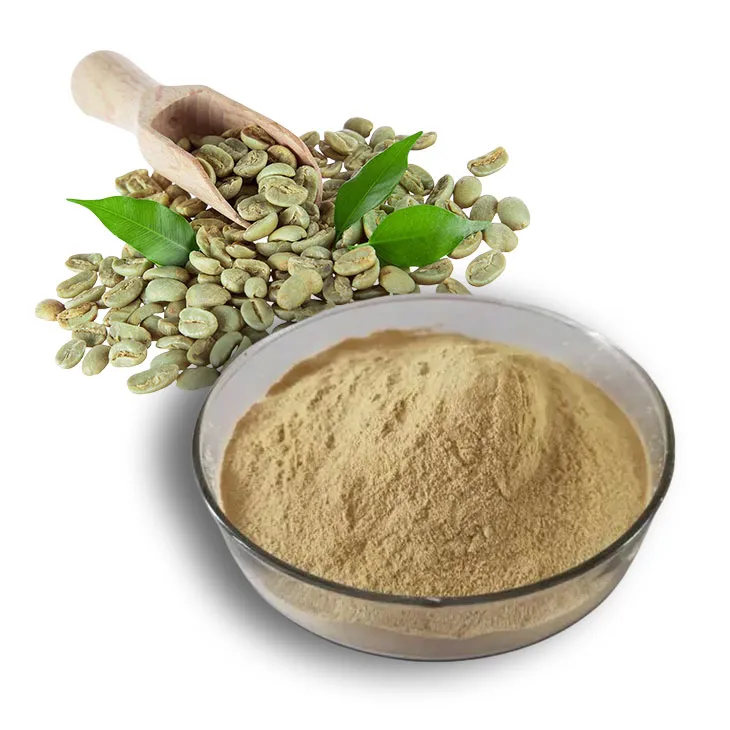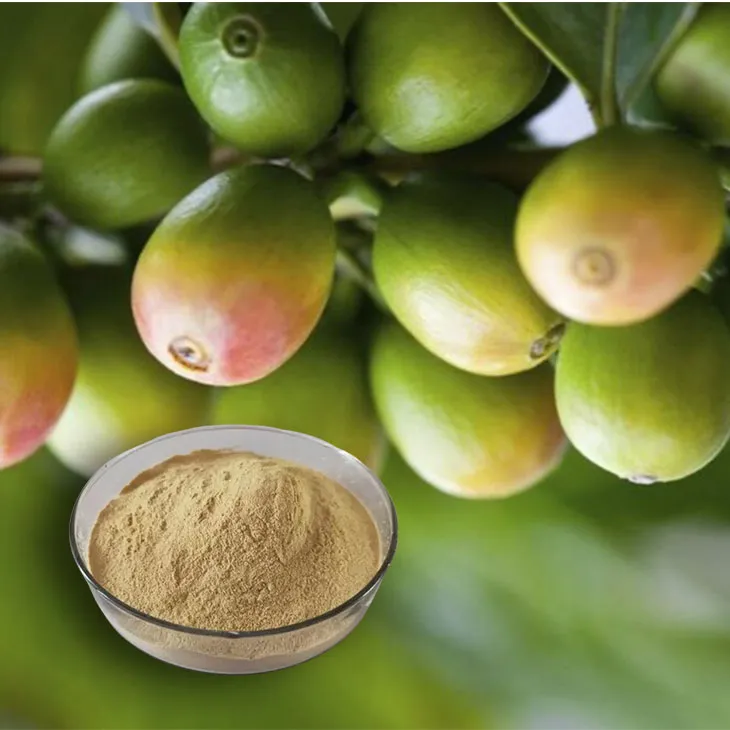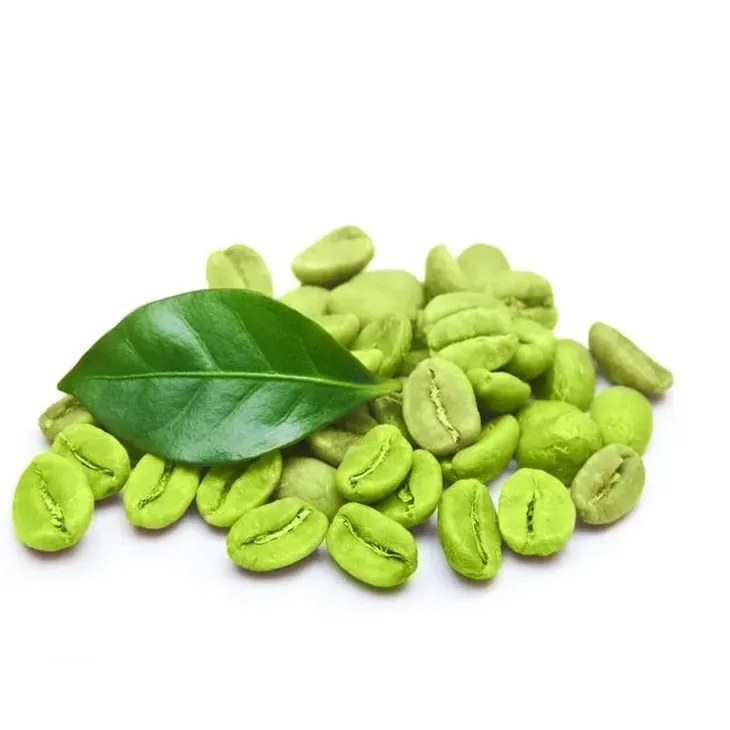- 0086-571-85302990
- sales@greenskybio.com
The process of extracting chlorogenic acid isomers from green coffee bean extract.
2024-11-30

1. Introduction
Green coffee beans are a rich source of chlorogenic acid isomers. These isomers have attracted significant attention due to their potential in various applications such as antioxidant, anti - inflammatory, and anti - microbial activities. The extraction process of chlorogenic acid isomers from Green coffee bean Extract is thus of great importance. This article will comprehensively discuss the process, from the initial preparation of green coffee beans to the final purification of the isomers.

2. Preparation of Green Coffee Beans
The first step in the extraction process is the preparation of green coffee beans. Green coffee beans are the starting material, and they need to be properly prepared before extraction.
2.1 Grinding
Green coffee beans are first ground into a fine powder. Grinding is a crucial step as it significantly increases the surface area of the beans. A larger surface area allows for more efficient extraction. When the beans are ground into a fine powder, the substances inside the beans, including chlorogenic acid isomers, are more accessible to the solvents used in the extraction process.

3. Selection of Solvents
For the extraction of chlorogenic acid isomers from green coffee bean powder, the selection of suitable solvents is essential.
3.1 Organic Solvents
Organic solvents such as ethyl acetate can be considered. Ethyl acetate has certain properties that make it suitable for the extraction. It has a relatively low polarity, which can selectively dissolve chlorogenic acid isomers while leaving some other unwanted components behind. However, when using organic solvents, safety precautions need to be taken due to their flammability and potential toxicity.
3.2 Aqueous Solvents
Aqueous solvents are also an option. Aqueous solvents can be more environmentally friendly compared to organic solvents. Water - based extraction systems can be designed to extract chlorogenic acid isomers. The solubility of chlorogenic acid isomers in aqueous solvents can be adjusted by changing factors such as pH and temperature.

4. Extraction Conditions
The extraction of chlorogenic acid isomers is typically carried out under specific temperature and pressure conditions to optimize the yield.
4.1 Temperature
Temperature plays a significant role in the extraction process. Different temperatures can affect the solubility of chlorogenic acid isomers in the solvents. Generally, increasing the temperature can increase the solubility, which may lead to a higher yield. However, if the temperature is too high, it may cause the degradation of chlorogenic acid isomers or other components in the Green coffee bean Extract. Therefore, an optimal temperature range needs to be determined. For example, in some extraction processes, a temperature range of 40 - 60°C has been found to be effective.
4.2 Pressure
Pressure also affects the extraction. In some extraction methods, such as supercritical fluid extraction, pressure is a crucial parameter. By adjusting the pressure, the density and solubility of the extraction fluid can be changed. In normal solvent extraction, ambient pressure or slightly elevated pressure may be used. However, in more advanced extraction techniques, specific pressure conditions may be required to ensure the efficient extraction of chlorogenic acid isomers.
5. Initial Separation of the Extract
Once the extraction is complete, the resulting extract contains a mixture of chlorogenic acid isomers along with other components. To obtain pure isomers, initial separation methods are required.
5.1 Thin - layer Chromatography (TLC)
Thin - layer chromatography (TLC) can be used for preliminary separation. TLC is a simple and cost - effective technique. In TLC, a thin layer of adsorbent material, such as silica gel, is coated on a plate. The extract is spotted on the plate, and then the plate is placed in a developing chamber with a suitable solvent system. As the solvent moves up the plate by capillary action, different components in the extract, including chlorogenic acid isomers, will move at different rates depending on their affinity for the adsorbent and the solvent. This allows for the separation of different components into distinct spots on the plate. However, TLC has its limitations. It can only be used for small - scale separation and identification, and the purity of the separated components may not be very high.
6. Further Purification
After the initial separation, more advanced techniques are needed for further purification to obtain high - purity chlorogenic acid isomers.
6.1 Preparative HPLC
Preparative HPLC (High - Performance Liquid Chromatography) can be utilized for further purification. HPLC is a highly efficient and accurate separation technique. In preparative HPLC, a large - scale column is used, and the extract is injected into the column. The column is filled with a stationary phase, and a mobile phase is pumped through the column at a high pressure. Different components in the extract, including chlorogenic acid isomers, will interact differently with the stationary and mobile phases, resulting in their separation. Preparative HPLC can provide high - purity chlorogenic acid isomers, which are suitable for further research and various applications.
7. Applications of Chlorogenic Acid Isomers
These pure chlorogenic acid isomers have significant potential in antioxidant, anti - inflammatory, and anti - microbial applications.
7.1 Antioxidant Applications
Chlorogenic acid isomers are known for their antioxidant properties. They can scavenge free radicals in the body, which are harmful substances that can cause oxidative damage to cells. By neutralizing free radicals, chlorogenic acid isomers can help prevent various diseases associated with oxidative stress, such as cardiovascular diseases, cancer, and neurodegenerative diseases.
7.2 Anti - inflammatory Applications
Inflammatory responses in the body can lead to various health problems. Chlorogenic acid isomers have been shown to have anti - inflammatory effects. They can inhibit the production of inflammatory mediators, such as cytokines and prostaglandins. This can help reduce inflammation in the body and may be beneficial for treating inflammatory diseases like arthritis and inflammatory bowel disease.
7.3 Anti - microbial Applications
Chlorogenic acid isomers also possess anti - microbial properties. They can inhibit the growth of various microorganisms, including bacteria, fungi, and viruses. This makes them potential candidates for the development of new antimicrobial agents, especially in the face of increasing antibiotic resistance.
8. Conclusion
The extraction of chlorogenic acid isomers from Green coffee bean Extract is a multi - step process that involves the preparation of green coffee beans, selection of solvents, optimization of extraction conditions, initial separation, and further purification. Each step is crucial for obtaining high - quality chlorogenic acid isomers. These pure isomers have great potential in antioxidant, anti - inflammatory, and anti - microbial applications, making the extraction process an area of great interest for further research and development.
FAQ:
What are the suitable solvents for extracting chlorogenic acid isomers from green coffee bean extract?
Organic solvents like ethyl acetate or aqueous solvents can be considered for the extraction of chlorogenic acid isomers from green coffee bean extract.
Why are green coffee beans ground into a fine powder before extraction?
Green coffee beans are ground into a fine powder before extraction to increase the surface area for extraction, which helps in better extraction of chlorogenic acid isomers.
What conditions are required for the extraction of chlorogenic acid isomers?
The extraction of chlorogenic acid isomers is typically carried out under specific temperature and pressure conditions to optimize the yield.
How can pure chlorogenic acid isomers be obtained from the extract?
To obtain pure isomers, fractionation methods are employed. Thin - layer chromatography (TLC) can be used for preliminary separation, and then more advanced techniques like preparative HPLC can be utilized for further purification.
What are the potential applications of pure chlorogenic acid isomers?
Pure chlorogenic acid isomers have significant potential in antioxidant, anti - inflammatory, and anti - microbial applications.
Related literature
- Isolation and Characterization of Chlorogenic Acid Isomers from Green Coffee Beans"
- "Optimizing the Extraction of Chlorogenic Acid Isomers for Therapeutic Applications"
- "The Role of Chlorogenic Acid Isomers in Antioxidant Activity: A Review"
- ▶ Hesperidin
- ▶ Citrus Bioflavonoids
- ▶ Plant Extract
- ▶ lycopene
- ▶ Diosmin
- ▶ Grape seed extract
- ▶ Sea buckthorn Juice Powder
- ▶ Fruit Juice Powder
- ▶ Hops Extract
- ▶ Artichoke Extract
- ▶ Mushroom extract
- ▶ Astaxanthin
- ▶ Green Tea Extract
- ▶ Curcumin
- ▶ Horse Chestnut Extract
- ▶ Other Product
- ▶ Boswellia Serrata Extract
- ▶ Resveratrol
- ▶ Marigold Extract
- ▶ Grape Leaf Extract
- ▶ New Product
- ▶ Aminolevulinic acid
- ▶ Cranberry Extract
- ▶ Red Yeast Rice
- ▶ Red Wine Extract
-
Maca Extract
2024-11-30
-
Oyster Mushroom Extract Powder
2024-11-30
-
Selenium yeast
2024-11-30
-
Yam Extract
2024-11-30
-
Cocoa Extract
2024-11-30
-
Acerola Extract
2024-11-30
-
Mangosteen extract powder
2024-11-30
-
Hericium erinaceus extract powder
2024-11-30
-
Motherwort Extract
2024-11-30
-
Okra Extract
2024-11-30





















